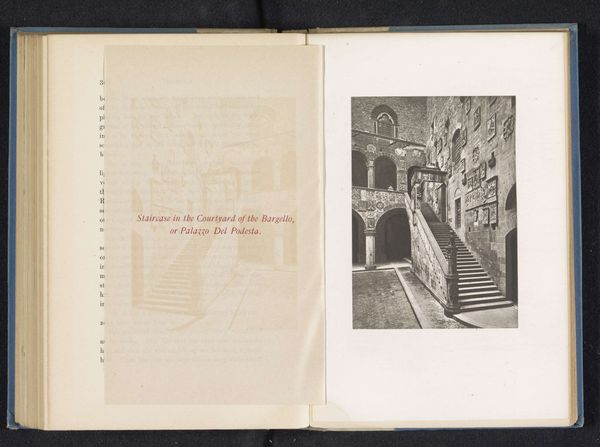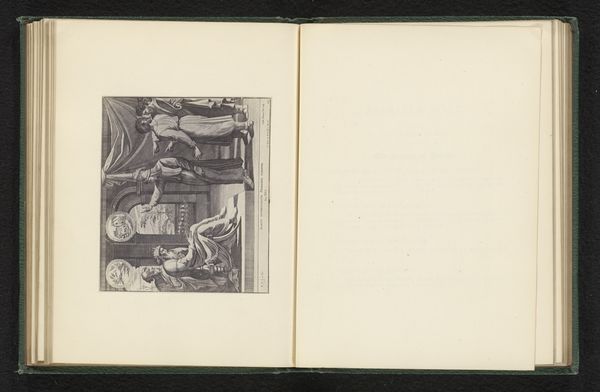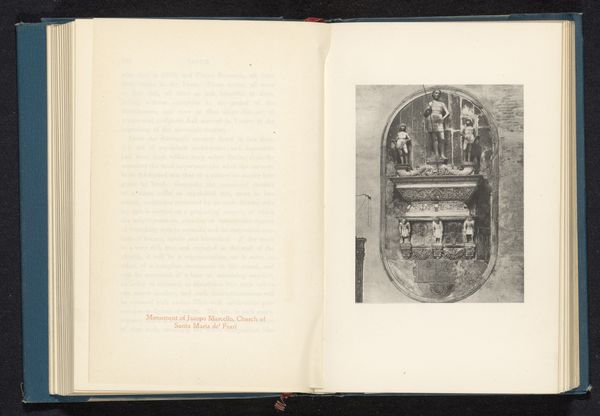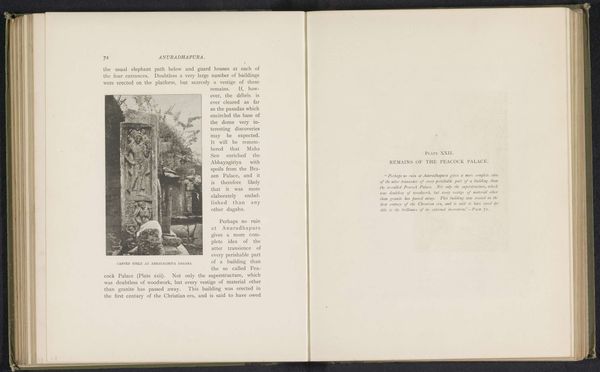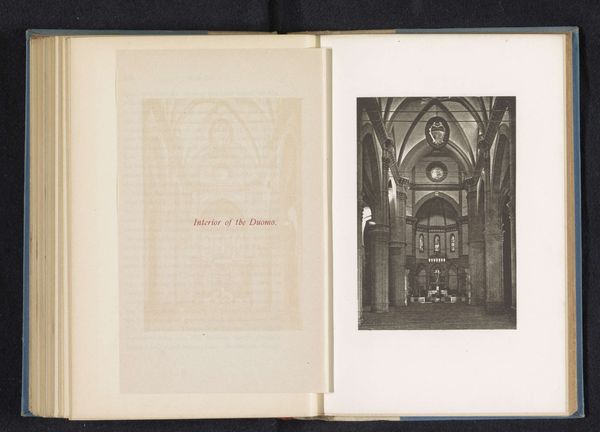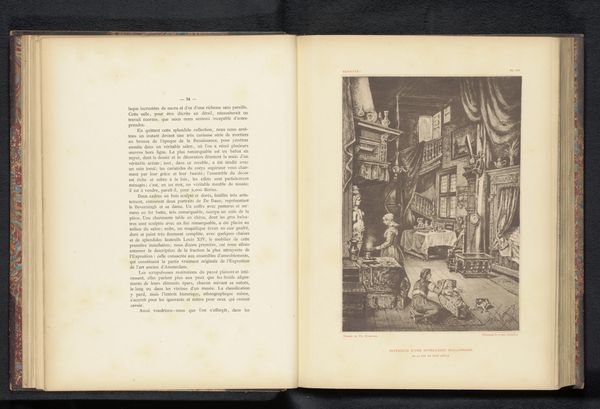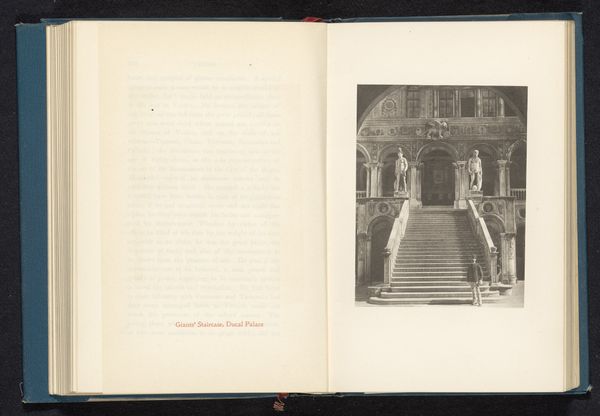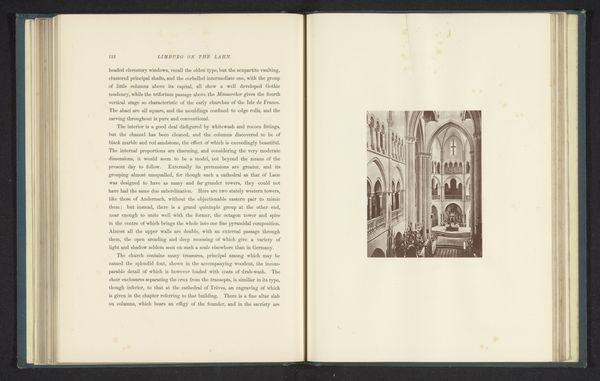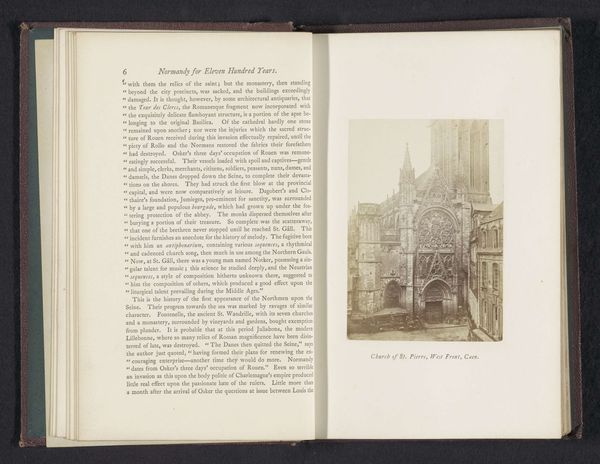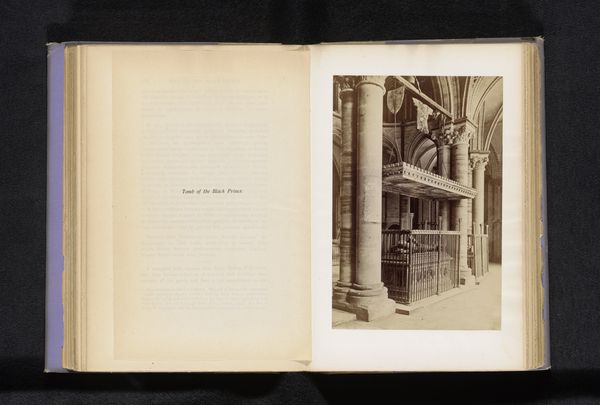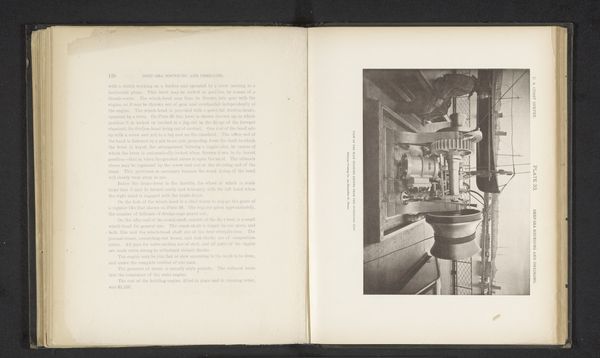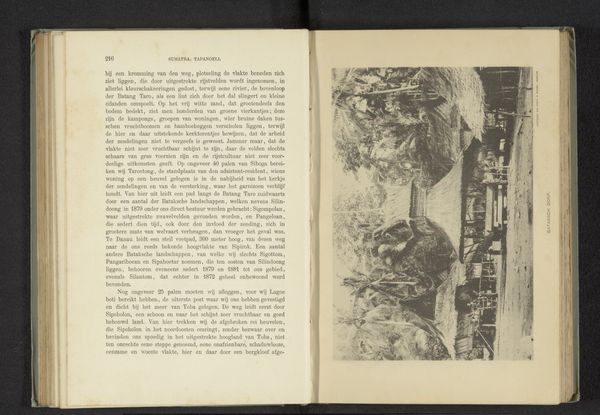
Opperste deel van de Porta della Carta van het Dogepaleis te Venetië c. 1882 - 1892
0:00
0:00
Dimensions: height 118 mm, width 90 mm
Copyright: Rijks Museum: Open Domain
Curator: Here we have an anonymous photographic print dating from around 1882 to 1892, entitled "Opperste deel van de Porta della Carta van het Dogepaleis te Venetië," which translates to "Upper Part of the Porta della Carta of the Doge's Palace in Venice." Editor: It’s striking, even in this reproduced form. The texture! The weight of the stone seems palpable. And what a sharp contrast in light and shadow! Curator: Indeed. Consider the meticulous detail captured here. Note the elaborate tracery of the Gothic arch, framing the sculpture. This print encapsulates a moment frozen in time. What is your interpretation of it formally? Editor: Formally, the play of light immediately pulls the eye to that central lion, but my gaze then follows the architectural details upward: columns, statuary, arches… But, knowing the Porta della Carta's significance, it's impossible to ignore the literal material construction: the quarrying of the stone, the carving, the installation, each artisan shaping Venetian identity. The materiality is deeply rooted in labor and commerce. Curator: An interesting reading. I agree, though the photographic lens presents its own type of creation; not just labor, but its indexical ability, capturing architectural construction, with visual veracity. Do you think the composition reflects the broader context? Editor: Absolutely. Venice, then as now, thrives on its image, commodifying history through craftsmanship. These stone lions were crafted and meticulously positioned to embody a cultural moment, a kind of branding you might say. And photography, in turn, captures this, becoming another layer in the commercial process of artistic representation. The labor and intention behind the physical creation is important here. Curator: A compelling viewpoint! I had intended to dissect solely its form but you have opened my eyes to the commercial aspect that must exist even when approaching Venetian style artwork, as we see here. Editor: Precisely! By attending to the means of creation, we unlock layers of meaning within these striking forms. Now, where should we delve next?
Comments
No comments
Be the first to comment and join the conversation on the ultimate creative platform.
